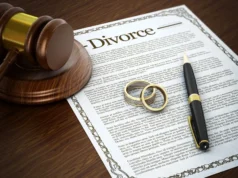
Pedestrian accidents are an unfortunate reality in busy urban environments and even in quieter suburban and rural areas. These incidents often result in severe injuries or fatalities, given the vulnerability of pedestrians compared to motor vehicle occupants.
Understanding what really happens in a pedestrian accident—from the moment of impact to the aftermath—can provide valuable insights for prevention and for knowing how to respond if such an event occurs. For more detailed legal guidance and support following a pedestrian accident, you can check this site.
The Anatomy of a Pedestrian Accident
When a vehicle collides with a pedestrian, the dynamics are different from those in a car-to-car collision. The size and speed of the vehicle, the point of impact, and the reaction time of both the driver and pedestrian play critical roles in the outcome.
Typically, the lower extremities of the pedestrian—legs and knees—make initial contact with the vehicle, followed by a secondary impact involving the upper body and head. This sequence of events often leads to a range of injuries, from broken bones and lacerations to traumatic brain injuries.
Immediate Aftermath and Emergency Response

The moments following a pedestrian accident are crucial. Immediate medical attention is often required to address life-threatening injuries. Bystanders or the driver involved should call emergency services without delay. While waiting for medical personnel, basic first aid can be administered if safe to do so. Keeping the injured person still and calm is essential to prevent further injury.
Emergency responders assess the situation upon arrival, providing critical care and stabilizing the pedestrian before transporting them to a medical facility. Law enforcement officials typically document the scene, gathering evidence and witness statements to understand the accident’s cause.
Common Causes of Pedestrian Accidents
Pedestrian accidents can occur for various reasons, often involving a combination of factors. Distracted driving is a leading cause, with drivers failing to notice pedestrians while using their phones or engaging in other activities. Similarly, pedestrians distracted by their own devices may step into traffic unexpectedly.
Speeding significantly increases the severity of accidents, reducing the driver’s reaction time and increasing the force of impact. Poor visibility due to weather conditions, inadequate street lighting, or obstructed views can also contribute to these accidents.
Lastly, alcohol and drug impairment on the part of either the driver or pedestrian can lead to poor judgment and slower reaction times.
Injuries Sustained in Pedestrian Accidents
The injuries resulting from pedestrian accidents vary widely but are often severe due to the lack of protection for pedestrians. Common injuries include fractures, particularly in the legs, pelvis, and arms.
Head injuries are also prevalent, ranging from concussions to more serious traumatic brain injuries. Internal injuries, such as organ damage and internal bleeding, are critical concerns that require immediate medical attention.
Soft tissue injuries, including bruises, cuts, and lacerations, are common and can vary in severity. Psychological trauma, such as post-traumatic stress disorder (PTSD), can also affect victims long after the physical injuries have healed.
Legal and Financial Implications

Pedestrian accidents often lead to complex legal and financial issues. Determining fault is crucial and can involve examining traffic laws, signal and sign compliance, and the behavior of both the driver and pedestrian. In many cases, the driver is found at fault, especially if they were speeding, distracted, or impaired.
Victims of pedestrian accidents may seek compensation for medical expenses, lost wages, pain and suffering, and other damages. This process typically involves negotiating with insurance companies, which can be challenging without legal assistance. Engaging a lawyer who specializes in pedestrian accidents can significantly improve the chances of securing fair compensation.
Prevention and Safety Tips
Preventing pedestrian accidents requires effort from both drivers and pedestrians. For drivers, adhering to speed limits, avoiding distractions, and being particularly vigilant in areas with high pedestrian traffic are critical. Using headlights in low-visibility conditions and always yielding to pedestrians at crosswalks can also prevent accidents.
Pedestrians should stay alert and avoid using electronic devices while crossing streets. Wearing visible clothing, particularly at night, can help drivers see pedestrians more easily. Using designated crosswalks and obeying traffic signals can significantly reduce the risk of accidents.
The Role of Urban Planning and Policy
Urban planning and policy play a significant role in pedestrian safety. Designing streets that prioritize pedestrian traffic, such as adding more crosswalks, pedestrian signals, and speed bumps, can create a safer environment.
Implementing traffic calming measures and improving public transportation infrastructure can also reduce the number of vehicles on the road, decreasing the likelihood of pedestrian accidents.
Policies that promote walking and cycling as primary modes of transportation can encourage healthier, more active communities while simultaneously enhancing safety for pedestrians. Public awareness campaigns focused on the dangers of distracted driving and the importance of pedestrian safety can further contribute to reducing accidents.
Emotional and Psychological Impact

Beyond the physical injuries, pedestrian accidents can have a profound emotional and psychological impact on victims. The trauma of the accident can lead to anxiety, depression, and PTSD. Victims may experience a loss of confidence, fear of walking near traffic, and other long-term emotional effects.
Counseling and psychological support are often necessary to help victims cope with these issues. Support groups and therapy can provide a space for victims to share their experiences and work through their trauma in a supportive environment.
Rehabilitation and Recovery
The road to recovery after a pedestrian accident can be long and challenging. Rehabilitation often involves physical therapy to regain mobility and strength, especially after severe injuries like fractures or head trauma. Occupational therapy can help victims adapt to any new limitations they may face in their daily lives.
Support from family and friends is crucial during the recovery process. Encouraging a positive outlook and being patient with the victim’s progress can make a significant difference. Community resources, such as support groups and rehabilitation programs, can also provide valuable assistance.
Conclusion
Pedestrian accidents are complex events with significant physical, emotional, and financial consequences. Understanding the dynamics of these accidents, their causes, and the steps involved in emergency response and recovery can equip individuals with the knowledge to better prevent and respond to such incidents. Urban planning, public policy, and community awareness all play critical roles in enhancing pedestrian safety.













